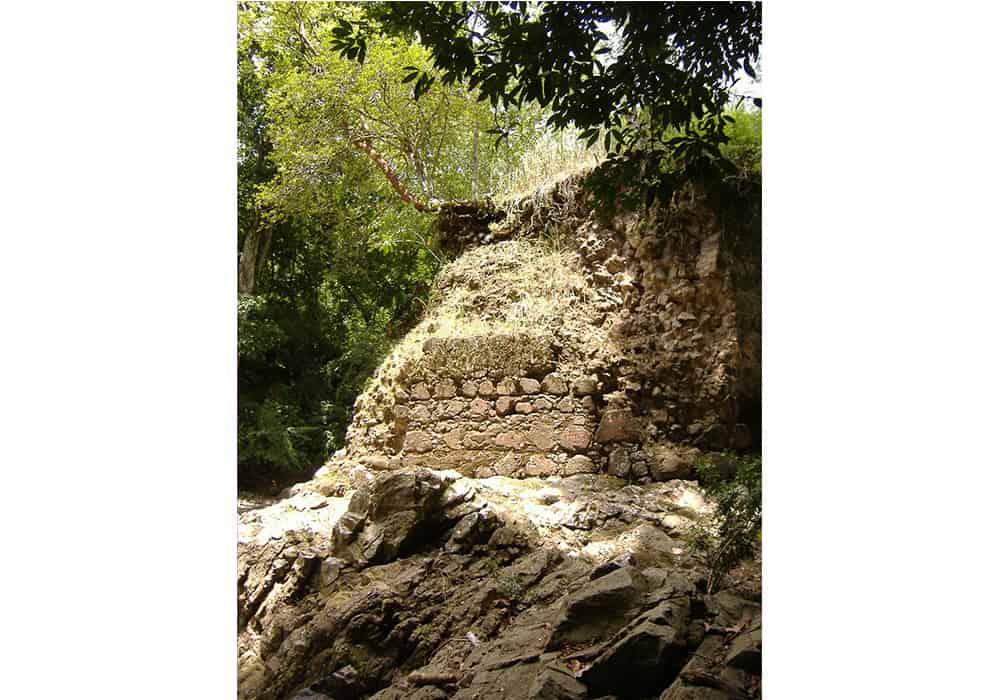Searching for the Mule Bridge over the Río Grande was almost as difficult as trekking through the nature preserve to get there. Not even the Internet seemed to know about it. It seems that there are several bridges known as mule bridges in Costa Rica, but there’s only one crossing this particular river near the town of Atenas about 30 minutes northwest of San José. By asking around the bus station and market, we got directions to the town of Río Grande and were told to ask at the train museum, which you can’t miss.
The authentic mule bridge is on private property, which is a nature preserve. Time has taken its toll on the structure, and it no longer spans the river, but the stout supporting columns remain. They have been declared part of the National Heritage, or Patrimonio Nacional, and cannot be demolished or changed.
The bridge dates back to the 1840s and is made of rocks, earth and cement. It replaced an earlier bridge that was built of wood in the 17th century, part of the Camino Real that connected Guatemala with all its provinces as far as Panama.
This section of the Camino Real was also known as the Camino de Mulas because raising mules and shipping them to Panama was an important commercial venture starting in 1601. Mules were driven from Cartago, east of San José, all the way to Panama; they hauled raw materials to the ports and brought back imported goods to the colonists. The roadway was composed, for the most part, of trails and paths.
Mule exportation reached a peak in 1735 when tobacco and other crops gained importance. Beginning in the 1840s, convoys of oxen and carts loaded with coffee followed the same road to the Pacific port of Caldera, and the present bridge was constructed.
Today, the bridge can be reached by a series of trails through the reserve. Although parts of the hike are rugged and rocky as it descends to the river, you are never very far from the starting point, and there is an emergency cutoff should the walk prove too difficult. All told, it is about a mile.
The nature along the paths is spectacular: the trail dives in and out of the forest. All in all, finding the bridge that played an important part of the country’s history four centuries ago is worth the effort.
Recommended are good hiking shoes, insect repellent, and a walking staff. The reserve is on private property, but the owners welcome visitors, and there is a ranchito for picnics, groups, or as a place to rest. Visit the Train Museum on Sundays. Buses from the Atenas station stop in front of the museum.
Mule Bridge hike at private reserve, 30 meters to the left of the Río Grande de Atenas Train Museum.








